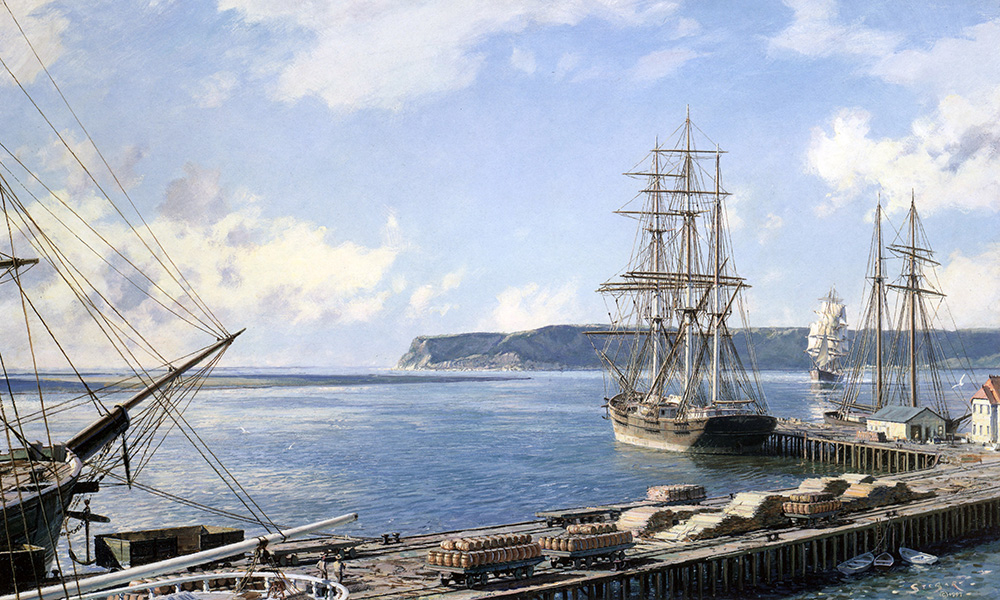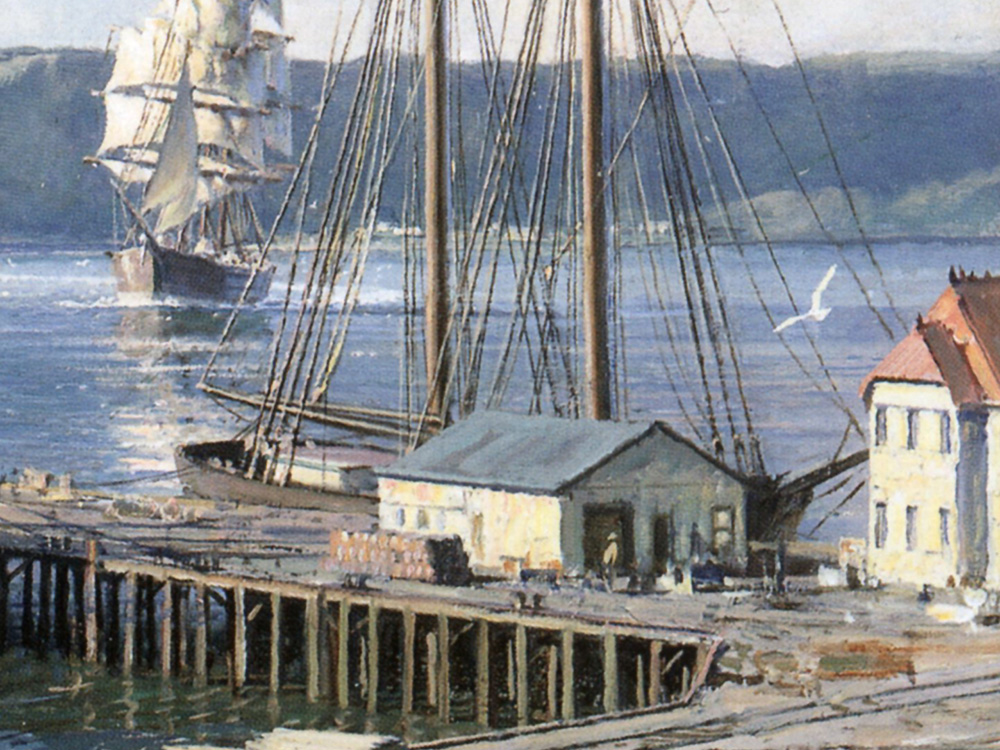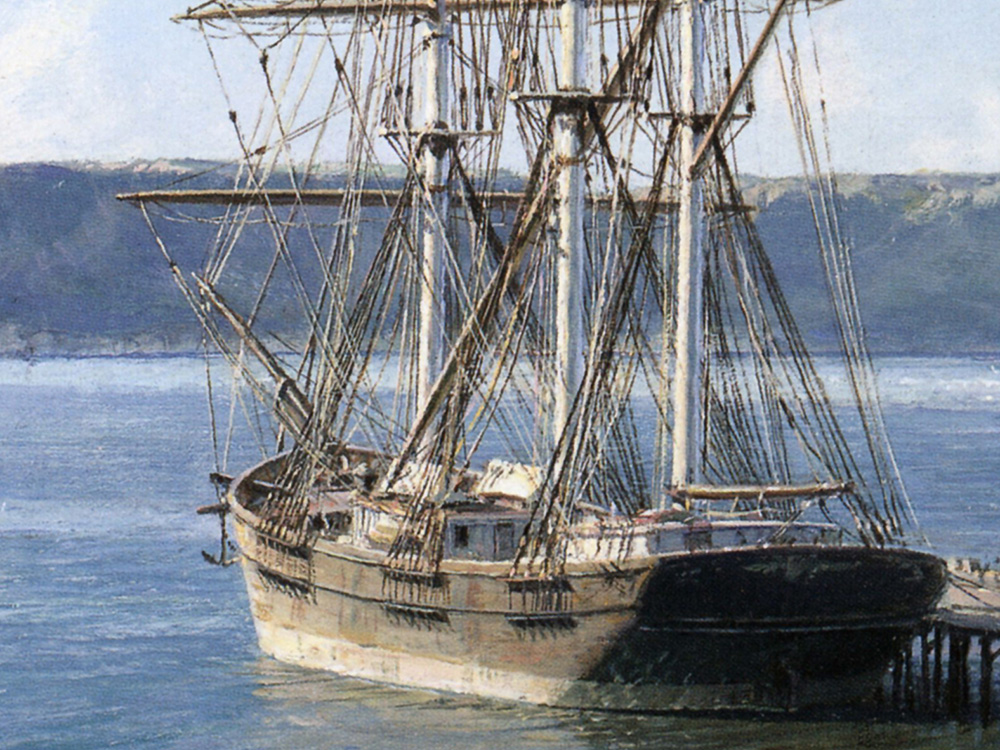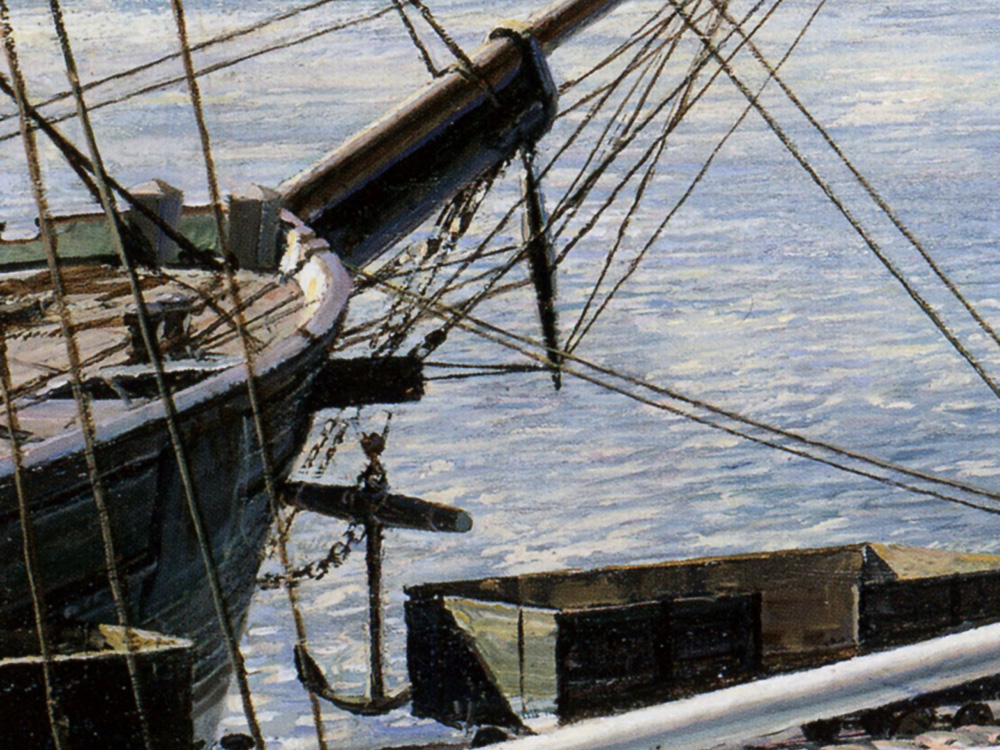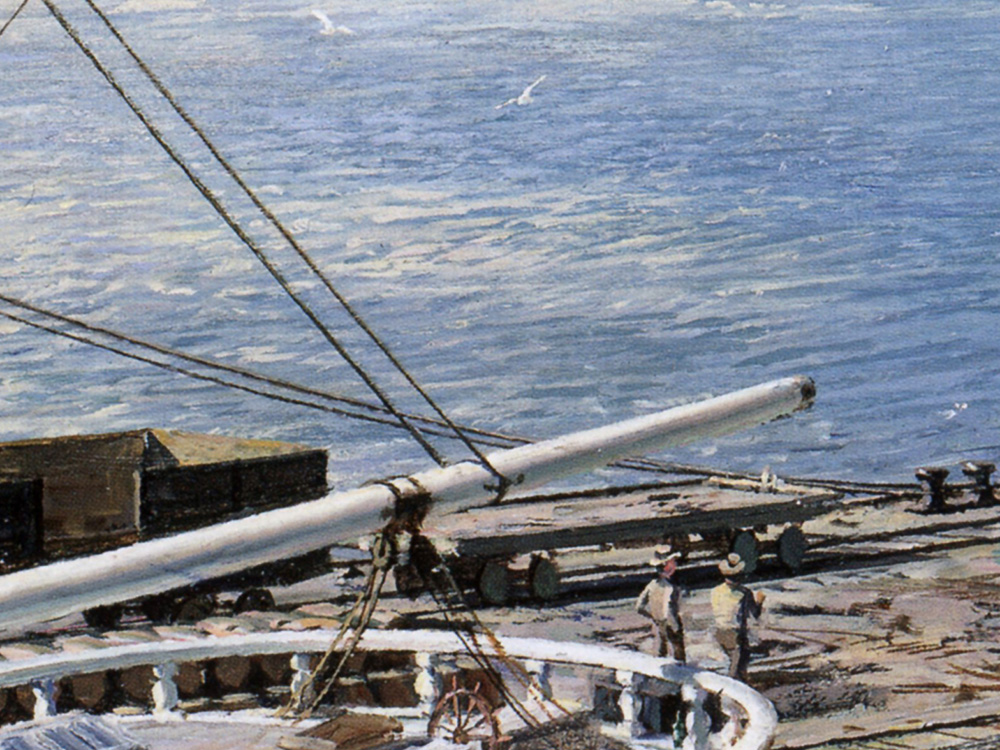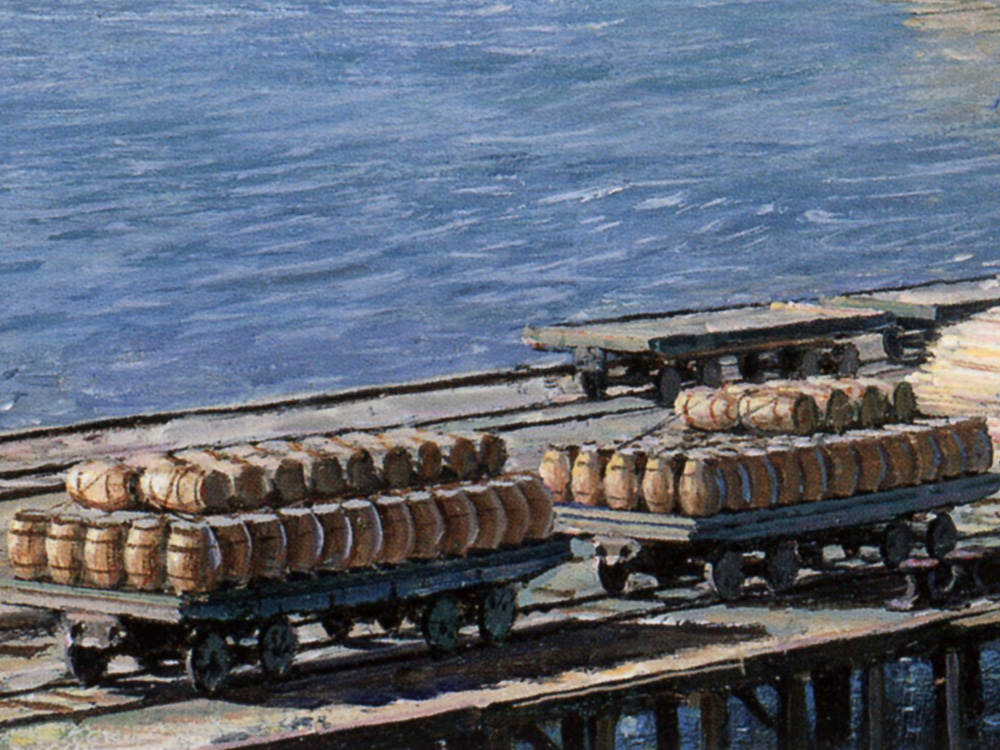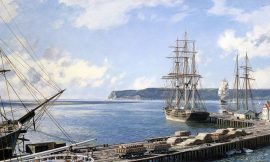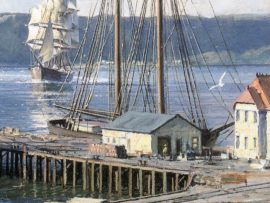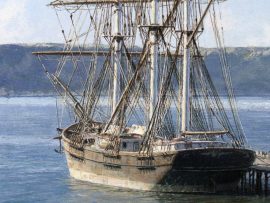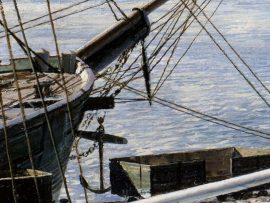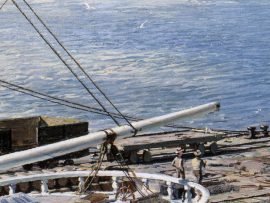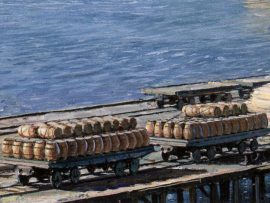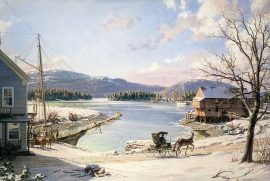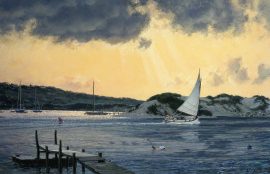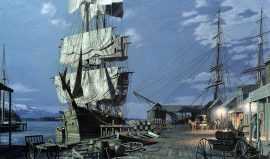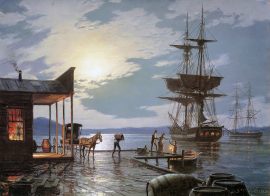San Diego: A View of Point Loma from Santa Fe Wharf in 1888
$500.00 Original price was: $500.00.$450.00Current price is: $450.00.
This great city, with its Mediterranean like climate, grew up, as did most coastal communities in a younger America, because of its accessibility to the long distance transport of the day, the sailing ship. Back in 1835, when Richard Henry Dana called there aboard the Boston hide drougher “Pilgrim” to pick up hides, most ocean trading was done through La Playa, a settlement on the east (leeward) side of Point Loma, (in the distance to the right in this view). There, unloading and loading had to be done by ships’ boats rowing to and fro from the vessels anchored offshore. This port of call was unique in that there was no surf at the beach in front of the hide houses and that it was the only place on the entire west coast where they could get the hides to the ship without getting them wet. Twenty years later the Pacific Mail and other steamers were still anchoring off shore, bringing their passengers in by the ship’s boat until it grounded, then piggybacking passengers ashore on the shoulders of brawny sailors!
But it was at the then embryonic town across the bay from Pt. Loma that the main port of San Diego would be sited. The city’s ongoing expansion, after the mid-eighties, resulted in continuous arrivals of lumber in schooners from the northern states, rail iron from Europe and coal from Australia and elsewhere to fuel the growing use of steam. Exports were primarily citrus fruits and dairy products. But San Diego never became a hub seaport with substantial trans-shipments going off to other ports.
In this view of San Diego in 1888, shortly after the Atcheson, Topeka and Santa Fe Railroad was completed in 1885, it features the Santa Fe Wharf which was originally built by Babcock and Storey in 1886.
| Weight | 6.00 lbs |
|---|---|
| Catalog: | Stobart-138 |
| Artist: | John Stobart |
| Dimensions: | 14 3/4" x 24 1/2" |
| Edition: | 500 |

